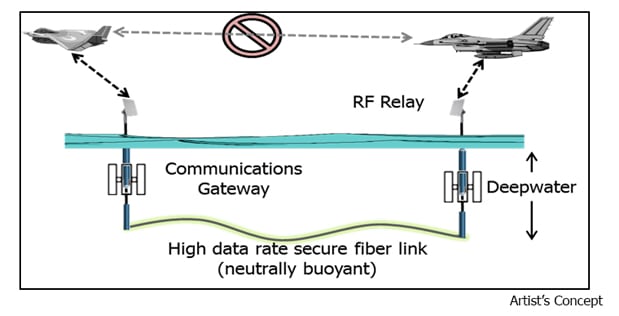[Avionics Magazine 01-23-2017] The Defense Advanced Research Projects Agency’s (DARPA) Tactical Undersea Network Architecture (TUNA) program is officially entering phase two, DARPA says. Following a successful first phase, the next steps calls for an at-sea prototype demonstration.

Artist’s concept showing the TUNA architecture with an undersea fiber-optic backbone enabling a temporary communications network when traditional tactical data links are unavailable. Photo: DARPA
TUNA aims to develop new optical-fiber-based solutions to temporarily restore tactical data network connectivity in a contested environment. In culmination, the project should yield a rapidly deployable undersea network that has the ability to last for at least 30 days. The initial phase involved modeling, simulation and at-sea tests of unique fiber-cable and buoy-component technologies. The University of Washington’s Applied Physics Lab (APL) developed an electricity generator called the “Wave Energy Buoy that Self-deploys,” or “WEBS.” It is designed to fit into a cylinder that could be deployed from a ship or aircraft, and generates electricity from wave movement.
The second phase is set to be TUNA’s final phase. During phase two, the plan is to design and implement an integrated end-to-end system, and then test and evaluate via laboratory and at-sea demonstrations. As a test case for the TUNA concept, teams are using Link 16, which is a common tactical data network used by U.S. and allied forces’ aircraft, ships and ground vehicles.